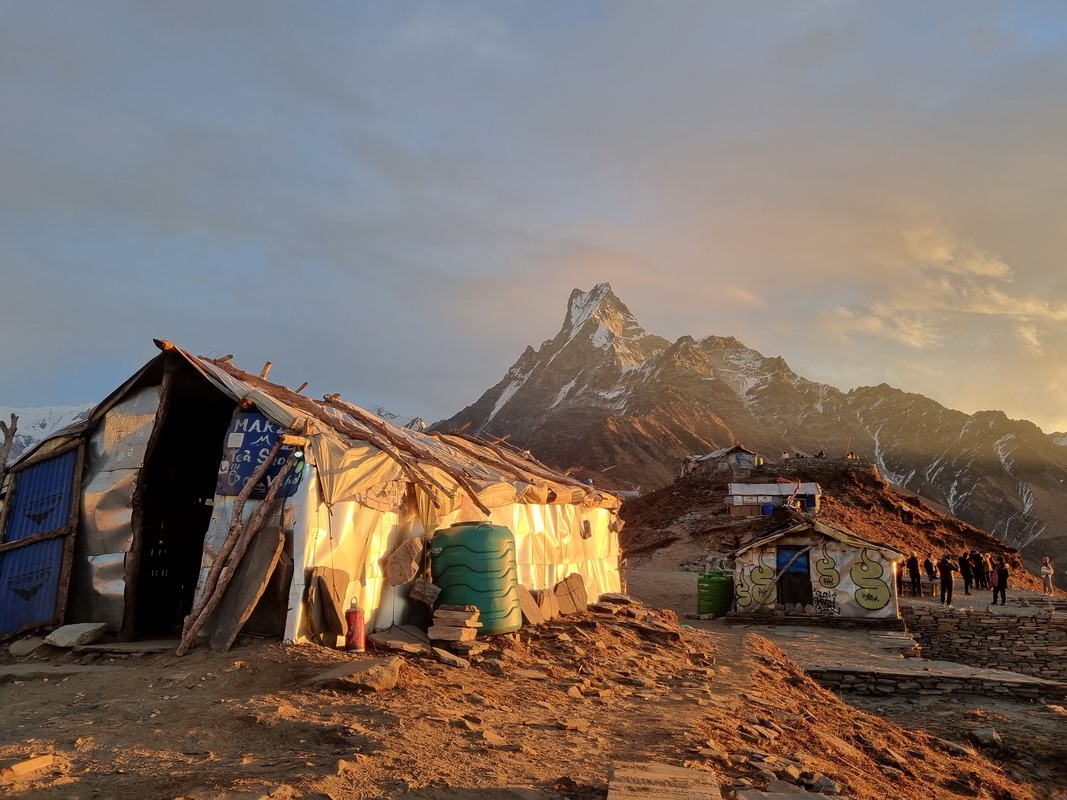

The start of Nepal’s main trekking season in 2024 leading into 2025 always means last-minute changes to permits
As the Nepal Trekking 2024/25 season kicks off, trekkers face new challenges with permit increases, unexpected fee hikes, and airport disruptions. There’s no point in wondering why, but every year at the start of a trekking season, Nepal decides it’s the perfect time to add new permits, change fees, and rebuild its international airport. Such things could be done after the season, but no, they like to upset everybody and cause plenty of confusion, it seems.
Here’s an easy look at what’s changed recently and what you, as a trekker, can expect.
Solukhumbu Regional Permit Increases for Nepal Trekking 2024/25
In July 2024, the Solukhumbu region announced that they were increasing the regional permit (for groups) and TREK CARD for solo trekkers to USD $30 per person. This includes Everest Base Camp, and Three High Passes.
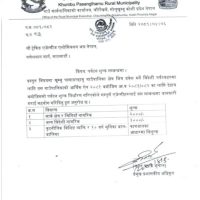
Sadly, they did not do what everyone wants and simply call the whole thing a TREK CARD for both groups and solo trekkers.
The reason given for the increase is a typical one we hear the world over from politicians: “to improve the infrastructure of the area.” Despite the millions made over the past few years, the only visible difference was the horrible new Tenzing sign that blocked out Everest. You’ll be glad to know it’s since been knocked over and is busy falling apart. These new permits and fees will apply during Nepal’s 2024/25 trekking season.
Manaslu’s New Regional Permit for the 2024/25 Trekking Season
In September 2024, the Chumnubri Rural Municipality decided to charge non-Nepalis USD $10 (1,000 rupees) for a permit and Nepalis 200 rupees at Jagat. The reason for this (surprise) is “to improve the infrastructure of the area.”
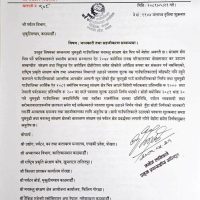
This new permit is what many have feared since the Solukhumbu region booted Nepal Tourism Board and the Trekkers Association of Nepal out of the Solukhumbu region as they were not passing on any funds. Other regions have now seen that this is possible, and they can now get money straight into their hands. It’s a worrying trend that can, and likely will, run wild due to the complete lack of regulation enforcement in trekking.
Manaslu now has more permits needed than any other trek in Nepal:
- Restricted Area Permit for Manaslu
- Manaslu Conservation Area Project (MCAP) permit
- Chumnubri Rural Municipality
- Annapurna Conservation Area Project (ACAP)
- Trekker Information Management System (TIMS Card)
- If you plan a side trek to Tsum Valley you will need a permit for Tsum Valley on top of the above permits.
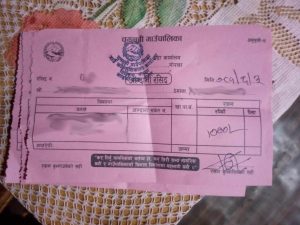

Full permit details including pricing can be found on my Manaslu Trekking Guide. The 3 week delay in announcing the new permit information out to trekkers stems from actually seeing for oneself if the Chumnubri Rural Municipality is indeed collecting the funds and where. As of last week, I can confirm they are indeed collecting money from trekkers, and the checkpoint is at Jagat.
Mardi Himal Trek: New Permit and Fee Updates for 2024/25 seemingly abolished
Earlier this year, the municipality in Mardi Himal set up a checkpoint to collect a $5 USD (500 rupees) permit fee from trekkers “to improve the infrastructure of the area.” Rather than rush into giving out this information, I spoke with local teahouses who were convinced it would not happen.

It did happen. A ticket counter was set up at Low Camp, and trekkers were being charged. Then it was closed down when locals objected to the extra charge, knowing exactly whose pocket the cash was going into. Later, the checkpoint was opened again, only for it to be robustly razed a few days later and has yet to appear again.
It’s good to know that local people are even fed up with administrations setting up these extra charges and the money disappearing. Better yet would be if someone would stop all this silliness and actually support local communities instead of becoming experts in making money vanish. In 2025 I would imagine this permit will remain off the cards. But it’s Nepal, so keep an eye out on my online Mardi Himal Trekking guide or my Trekking in Nepal guidebook.
Annapurna and Manaslu National Park Permits now available online for 2024/25
Surprisingly the The National Trust for Nature Conservation (NTNC) have released a new online National Park Permit portal to obtain permits or E-Permits. This means both trekking companies and trekkers can apply for, and pay online, for a National Park Permit for the Annapurna Conservation Area (ACA) and Manaslu Conservation Area (MCA). Print it out themselves and it will be accepted at checkpoints. The positive aspect in this is that one doesn’t have to deal with Nepal Tourism Board or the transport fee in getting there and back for a permit. It also means the fees will be going directly to the NTNC rather than NTB.
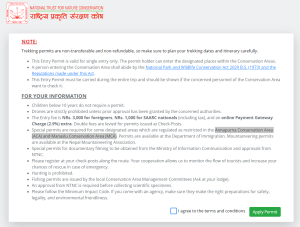
The negative aspects are that as a “foreigner” you’ll be charged extra 2.9% for the privilege (trekking companies will not be charged). With NTB and TAAN continuing their diatribe about banning solo trekking, making guides mandatory, fining trekkers and so forth it makes little sense to pay more for a permit and hand over your credit card details, when your trekking company can get one at the regular price.
It’s a brand new system, so there will be hiccups. I’d exercise caution for now. It is, however, another clear indication of organisations and the like trying to distance themselves from the actions of NTB. All online trekking guides here have been updated with the new online portal for those that want to use it. So far the feedback for e-permits has been negative with many stating the site often doesn’t work or is down. Again, it’s cheaper and easier to get your trekking company to obtain all your permits.
Kathmandu Airport Disruptions: What 2024/25 Trekkers Should Know
Speaking of the last sentence above, Kathmandu airport is also planning to shut down for “maintenance of a runway” right in the middle of peak season. The closure will be from November 8th between 10 pm and 8 am — so night-time and early morning flights will be affected the most. However, there will be a knock-on effect of other flights being bumped out of schedule due to the backlog.

Sound familiar? Yes, it happened last year too. I guess the new Chinese runway didn’t hold up too well over the year. It’s certainly nothing to do with the new airports in Pokhara and Bhairahawa (Lumbini) still having no international flights yet … I’ve also no idea why such “repairs” couldn’t have been booked for one month later or even two. However, the stalwarts at the Civil Aviation Authority of Nepal say it’s no problem.
Meanwhile, airlines and the like are saying it will mean the cost of a flight to Nepal will increase by $500 to $1,500 due to rerouting, and they also are not convinced the two new airports are viable. Let’s not forget that aside from the flight costs, many travelers will need to pay for transport between the new cities and consider the time involved. CAAN is the organization that is hugely criticized both internationally and domestically due to safety issues with air transport in Nepal and has yet to be held accountable.
My advice to people who have not booked their flights is to do so quickly to avoid these extra charges if possible. Also, keep an eye out for any schedule changes by the airlines. Most large international airlines fly into Nepal during regular hours and thankfully pay little heed to CAAN. I would suspect they will also ensure that their scheduled flights will not change. The flights most likely to be affected will be cargo, freight, and overseas worker flights. All the same, do read about arriving into Kathmandu Airport.
The recent floods in Nepal
Tragically, over 200 local people recently lost their lives due to the heavy rains that hit Nepal at the end of September and the start of October. Usually, such heavy rains and damage are not well reported in Nepal. This year, the floods hit the Kathmandu Valley, which is heavily populated. Decades of cheap road building around Nepal and the Kathmandu Valley meant the new roads were simply washed away.

Sadly, in the course of building, many roads’ excavated soil was simply left on the sides of mountains and fields rather than being transported away. All it took was for this soil to be hit by heavy rains, and you can imagine the fallout. The lack of response or help from authorities was once again highlighted by local people. Many videos went viral nationally as officials were completely unaware of rescue attempts, airline price gouging, and road blockages.
For trekkers, most of the main routes are clear now, though expect a bumpy ride. The only route to avoid until further notice is Kanchenjunga in the east. It’s a remote area, and the landslides are not clear yet. Of note, it’s been highlighted that the actual Kanchenjunga trek has several hazards due to a lack of maintenance. It’s also been highlighted that many new guides or trekking companies are sending new guides out with trekkers. Do be aware that if going on the Kanchenjunga trek, make sure your guide is experienced there. Ask for photos and proof.
Essential Tips for Nepal Trekking in the 2024/25 Season
Prepare for Higher Costs and Permit Changes: With the new permit fees and regional surcharges in place, trekkers should budget for these higher costs, particularly in areas like Solukhumbu (confirmed), Manaslu (current but may change), and Mardi Himal (not likely). Make sure to double-check the latest requirements before setting out, as fees and regulations can shift at short notice. The best place to do this both online here, and in my guidebooks. If your trekking with a guide and suddenly see these unexpected checkpoints, just pay and get a receipt. Complaints are best discussed with local teahouse owners, and directed at Embassies. NTB and TAAN will not do anything so if you want to make an official complaint, then send it to the Minister for Tourism and Aviation. For the latest permit fees see the relevant trekking guide here, on my Nepal trekking permit fee page, or in my guidebooks.

Plan for Airport Delays and Changes: Given the ongoing runway maintenance at Kathmandu’s Tribhuvan Airport during peak trekking season, it’s crucial to plan your flights carefully. Night flights between 10 PM and 8 AM may be canceled or rescheduled, so aim to book daytime flights to avoid delays. Keep an eye on any updates from your airline and consider factoring in extra time for connecting flights or transportation to your trekking destinations. As I’ve advised here for years, give yourself at least 2 days extra in Nepal for delays. If you don’t have the extra two days, be prepared to pay extra for private transport in case you miss domestic flights etc. Most importantly, let the trekking company book your domestic flights – they can handle any cancellations, or rescheduling at no extra cost (if they are a good company). Again, check out about arriving into Kathmandu city airport.
Monitor Weather and Trail Conditions: Recent floods have left some trekking routes in rough condition, particularly in remote areas like Kanchenjunga. Before starting your trek, check for local trail updates and potential landslide risks. MissingTrekker.com or indeed this list of treks in Nepal with maps. Trekking companies, online tour booking companies and the like will always say “it’s fine, book now”. A little research is indeed needed before going to Nepal. For example, I’ve been monitoring Annapurna Base Camp for years and have seen February and March become problem months due to heavy snow fall blocking the route and shutting teahouses down. For safety, ensure that your guide has experience in the specific region you are trekking, and consider hiring a more experienced guide if you’re heading to off-the-beaten-path routes or in the off-season.
Once again, check my trekking guides for individual treks – there’s usually a information box with the latest updates. Likewise all my guidebook are updated to be the latest guidebooks to Nepal in the world. Finally, you can also use my Find a Trekking Guide in Nepal service is you are looking for reputable trekking company or indeed get legitimate trekking company information in my guidebooks to Nepal.
Unlock the ultimate trekking adventure with my Guidebooks to Nepal!
Elevate your trekking experience with the most comprehensive guidebook dedicated to Trekking in Nepal. Discover 29 full treks spanning over 400 pages, providing unparalleled insights. What sets it apart? It’s the only guidebook globally featuring trekking links, guiding you on seamlessly connecting treks Whether you prefer an instant download or the paperback edition shipped worldwide, this guidebook is your passport to unmatched exploration.
Ready to embark on a journey beyond the ordinary?
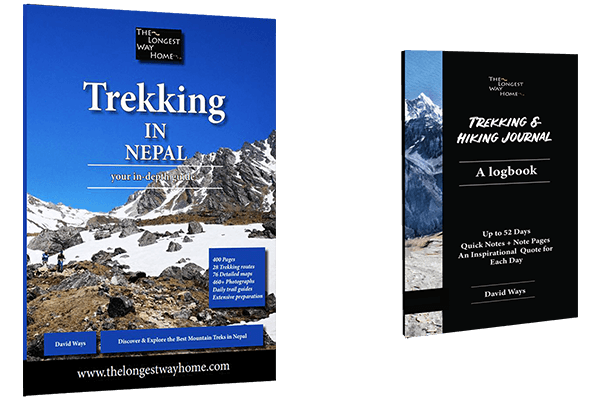
Get the Digital Trekking in Nepal guidebook!
Grab the Paperback Trekking in Nepal Guidebook!
Explore the Paperback Trekking & Hiking Journal!
If you’re seeking a holistic guide covering the entire country or focusing on the most popular treks, dive into my full Nepal Guidebook. It stands as the world’s sole guidebook incorporating entry prices for every attraction, comprehensive maps, and, of course, the finest information.
Discover why this book surpasses all others: Find out more here!

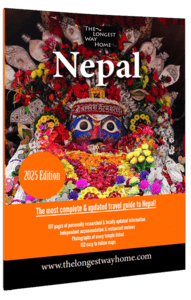
Wow, these new permit fees seem to come out of nowhere. I hope this doesn’t make trekking too expensive for budget travelers
It’s definitely something to watch, Emily. I do keep all the guides on this website updated the moment a new fee appears. Likewise the digital guidebooks. Otherwise some fees appear for a month and then disappear. If a new fee is introduced I do wait until I can get physical confirmation that the checkpoints are asking for them. This way you’ll get an honest confirmation.
The online permit system sounds convenient, but with all the issues you mentioned, is it really reliable?
It’s still early days, and problems are being reported. For now, it’s probably safer to let your trekking company handle it.
Much like booking domestic flights. Though every year I get emails from trekkers saying their Lukla or Pokhara flights were cancelled and they lost money … I’ve written about this for over 10 years and yet the saving of $10 seems too great for some, and they go for the cheap flights and so much wasted time, money and hassle. I have a feeling the same thing will happen with this e-permit system.
I can’t believe they’re doing runway maintenance during peak season again!
Yes, it’s nuts. And today Manthali flights are all delayed or cancelled due to bad weather in Manthali. Kathmandu airport … no problems.
Does the new permit for Manaslu apply to all trekkers, or just solo ones?
It applies to all trekkers.
The floods sounded terrible. Do you think it’s safe to trek in the Annapurna region right now?
Everything is fine in the Annapurnas. The Kathmandu Valley and eastern part of Nepal got the worst of the flooding. Kanchenjunga is currently the only trekking region with landslides or damaged roads.
I’m planning to trek Mardi Himal next year. Do you think they’ll reinstate the $5 permit fee?
That’s a hard question to answer. I’d say the permit will not be reintroduced. However, come local elections, who knows. Check out my online Mardi Himal Trekking Guide before you go to be sure. Or my Trekking in Nepal Guidebook.
What are your thoughts on the new permit fees affecting the Annapurna Circuit, Manaslu and Solukhumbu?
So far, it’s having a trickle down affect. This is mainly due to the “bucket list” attraction of Everest Base Camp being a big attraction. It’s also due to the relatively nominal increases of $10 compared to huge international flight prices which are having a greater impact. It is however, all adding up. And trekkers are scratching their heads wondering why there are so many permits needed vs the cost. The trickle affect of needing a permit for just about everywhere is turning people off Nepal. For now, the combination of cost increases has affected backpackers the most.
The biggest impact for the Solukhumbu region is actually the domestic flight prices which are discriminatory as Nepali fees are much lower. The increase of travel insurance due to trekking scams and helicopter rescues. Likewise the TAAN and NTB ban on solo trekking has reduced the number of people in those regions.
The interesting thing is that trekkers are now saavy to such increases. They come to sites like this and see the breakdown of prices and reasoning behind it. Ethics does come into play when trekkers see things like the Mardi Himal increase then the locals stopping it. Then they read about the new Manaslu fee and why it was introduced (the fee share never coming from TAAN or NTB). The notion of corruption was waning in Nepal to tourists, now it is at the top of people’s minds again.